
Three-dimensional graphics gradually penetrate our daily work tasks. It doesn’t matter who you are - a graphic designer creating an image of a brand, a digital specialist working on a landing page or a manager working with outsourced illustrators - sooner or later you will come across 3D content.
In this article, I will talk about popular industry trends and show how we implement them in our work on Acronis branding and events.
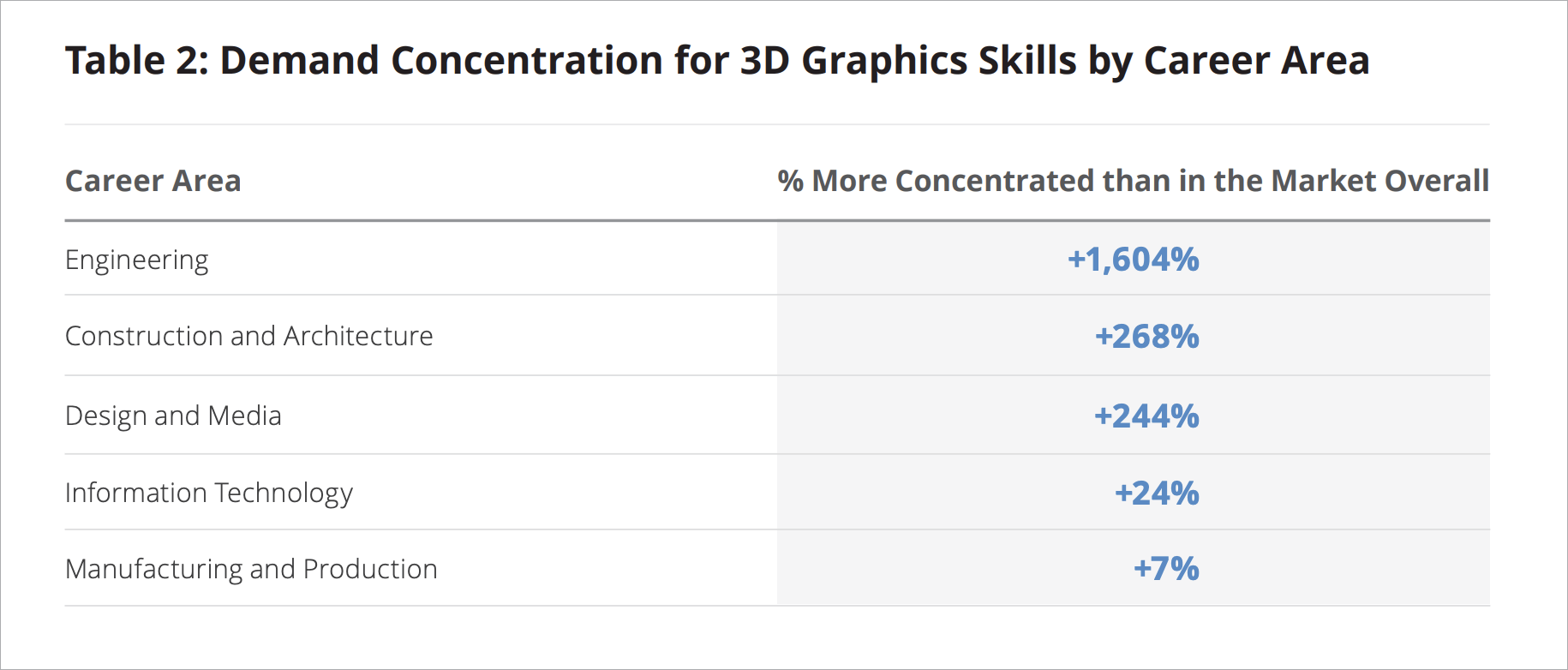
Source: Visualizing the Future Report, Burning Glass Technologies, 2019
3D technologies are becoming available in terms of price and management, and customers expect us to integrate them into their work. The Visualizing the Future report shows that 3D skills are crucial in a variety of professional areas including IT, architecture, design and the media.
In August, I attended Siggraph 2019 , a week-long conference dedicated to recent advances in computer graphics, virtual reality, video games, and animation, to find 3D technology that could be useful to designers in the company.
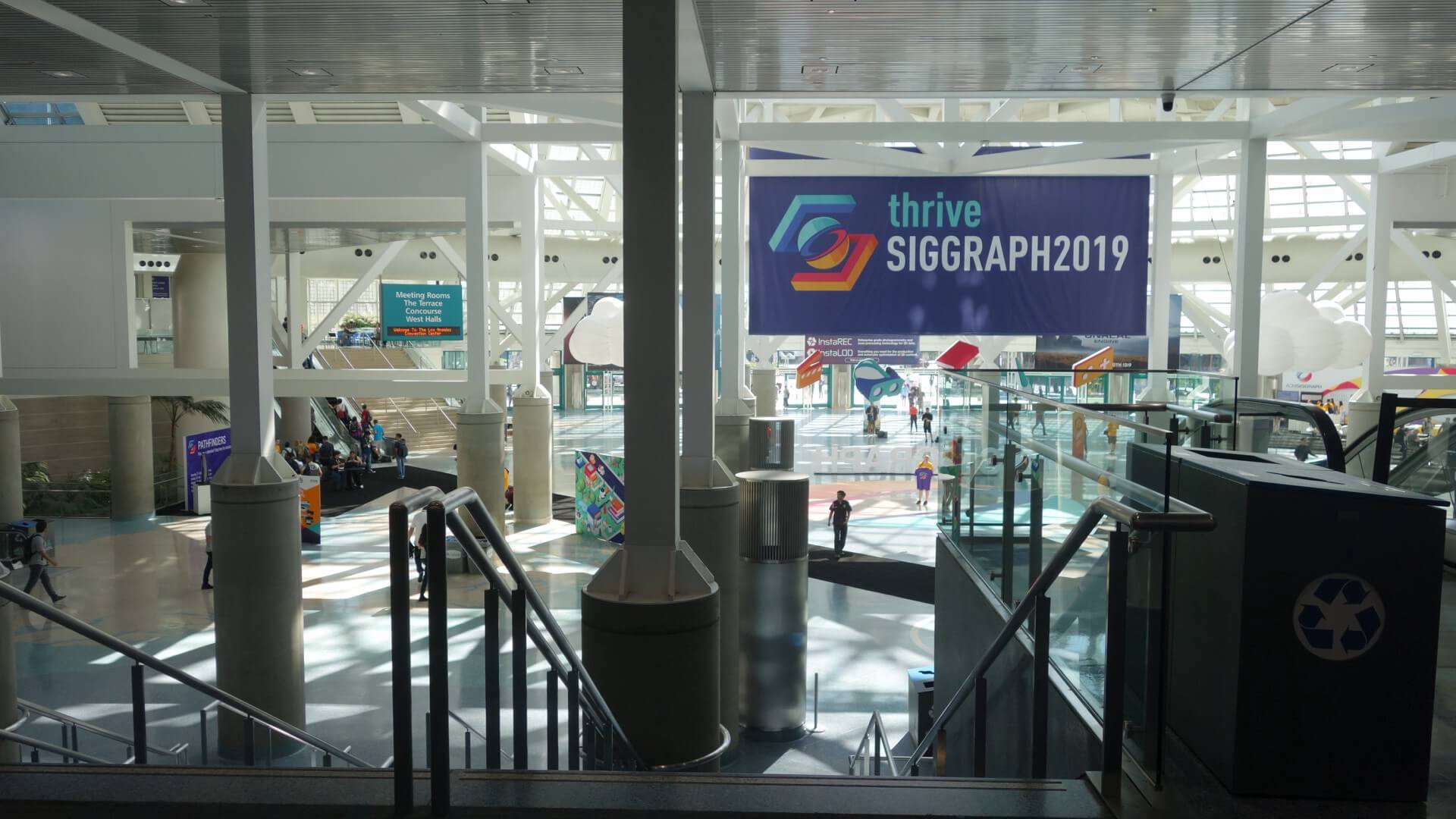

Photos from Siggraph 2019, Los Angeles Convention Center
Trend # 1: 3D programs are becoming available
Blender
The industry's most talked about topic is Blender , a free and powerful software for creating and rendering three-dimensional graphics. Blender, a former enthusiast tool, is fast becoming the industry standard along with Maya and ZBrush programs, and companies like Nvidia, Epic Games, and Ubisoft are joining the Blender Development Fund.
For example, Netflix's Next Generation film, created with Blender, proves that open source technologies can be used in serious manufacturing processes.
Blender has an active community in which there is a regular exchange of plugins, source files and documentation. There is a lot of free stuff like Blender 2.8 tutorial videos for beginners to learn how to create your first donut.
Blender can help brand designers when working with industrial design objects. The program understands the craziest CAD formats. It is suitable for automatically creating and editing UV scans without which 3D models will not have a normal texture. And, importantly, Blender is optimized even for non-professional devices.

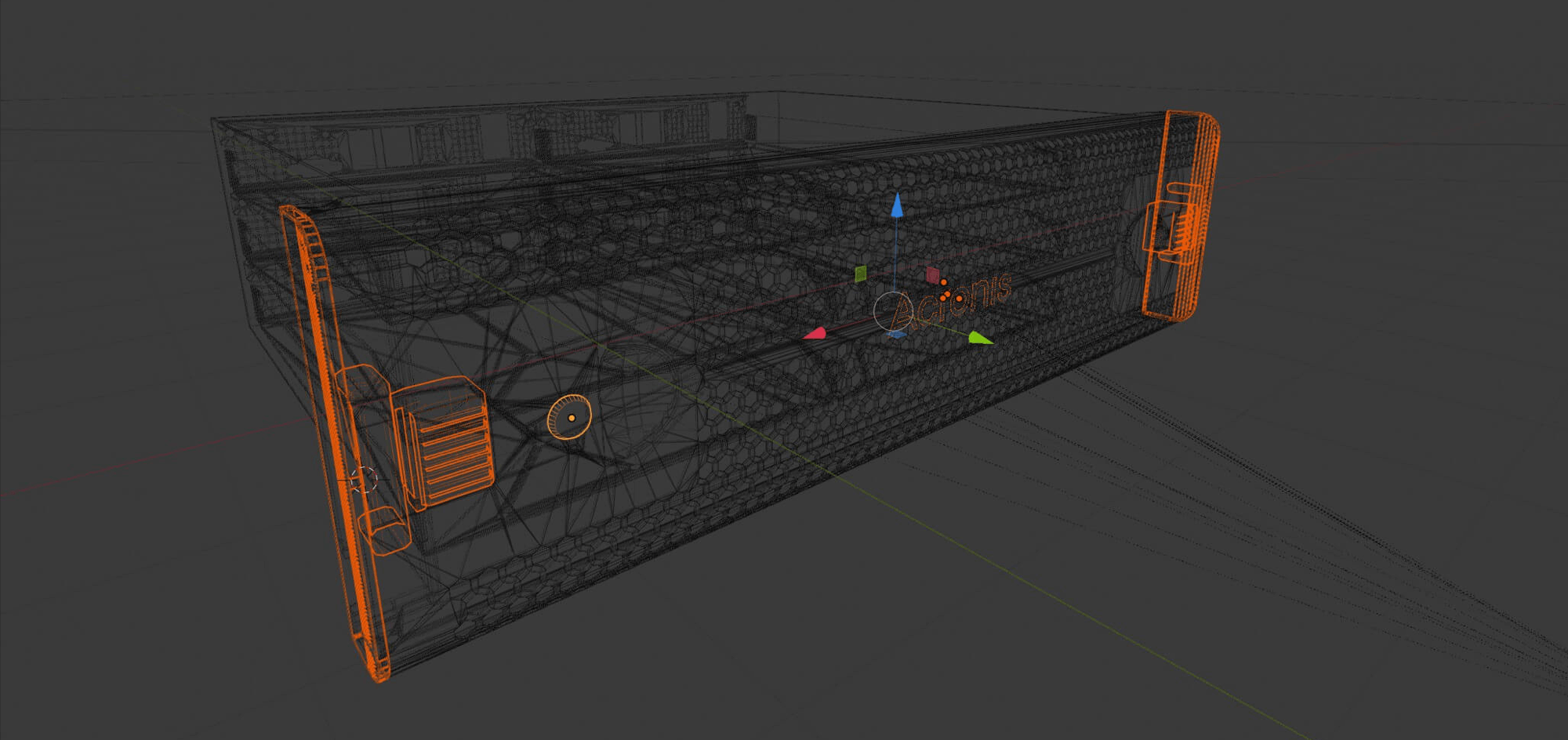
Local Cloud Appliance prototype made with Blender
Cinema 4d
For those who do not want to delve into 3D modeling, there is a more convenient tool - Cinema 4D. This program is easy to learn, even if you have never worked with three-dimensional graphics. It is convenient for rapid prototyping of concepts. The program supports popular renders - Redshift, Octane, Corona.
In working on Acronis branding and events, we use Cinema 4D for interior design (stands, offices, driving directions), visualization of packaging and illustrations.


Examples of assets created using Cinema 4D: a model of an elevator in an Acronis office, a 3D icon, a bottle of Acronis wine
As I said, Cinema 4D does not require serious 3D modeling skills to create basic objects. The program works well with the dimensions of the physical world (centimeters, inches), which helps to create accurate visualizations of future printed materials . Moreover, adding people to the scene, we check how they interact with branding and how the labels will look on photos and videos (important for marketing and PR reports).
Zone for Acronis Global Cyber Summit 2019 , Cinema 4D
Trend # 2: The Future of 3D - in Real Time
With the development of game engines such as Unity , Unreal Engine, and CryEngine , more real-time 3D visualization capabilities have appeared.
Since 2009, Siggraph has been hosting the "Real-Time Live!" demonstrating the latest advances in real-time computer graphics.
Nobody wants to wait any longer:
- Designers create architectural images and automotive design in real time through Unreal Studio
- The directors shoot real-time animated films in Unity and transfer the actors ’game directly to the cutscene using the Unreal Engine
- Even 3D modeling software is moving to faster rendering: the latest version of Blender 2.8 has EEVEE - a real-time rendering engine

Screenshot from the video game “Death Stranding”, which shows the picture in real time in the game engine. Kojima Productions, 2019
And this is not a whim of the creators, but the need of the market. The Visualizing the Future report shows that the demand for real-time 3D technology professionals exceeds the number of professionals in the market. Also curious, but not surprising, is the growing interest in sales, marketing and PR:
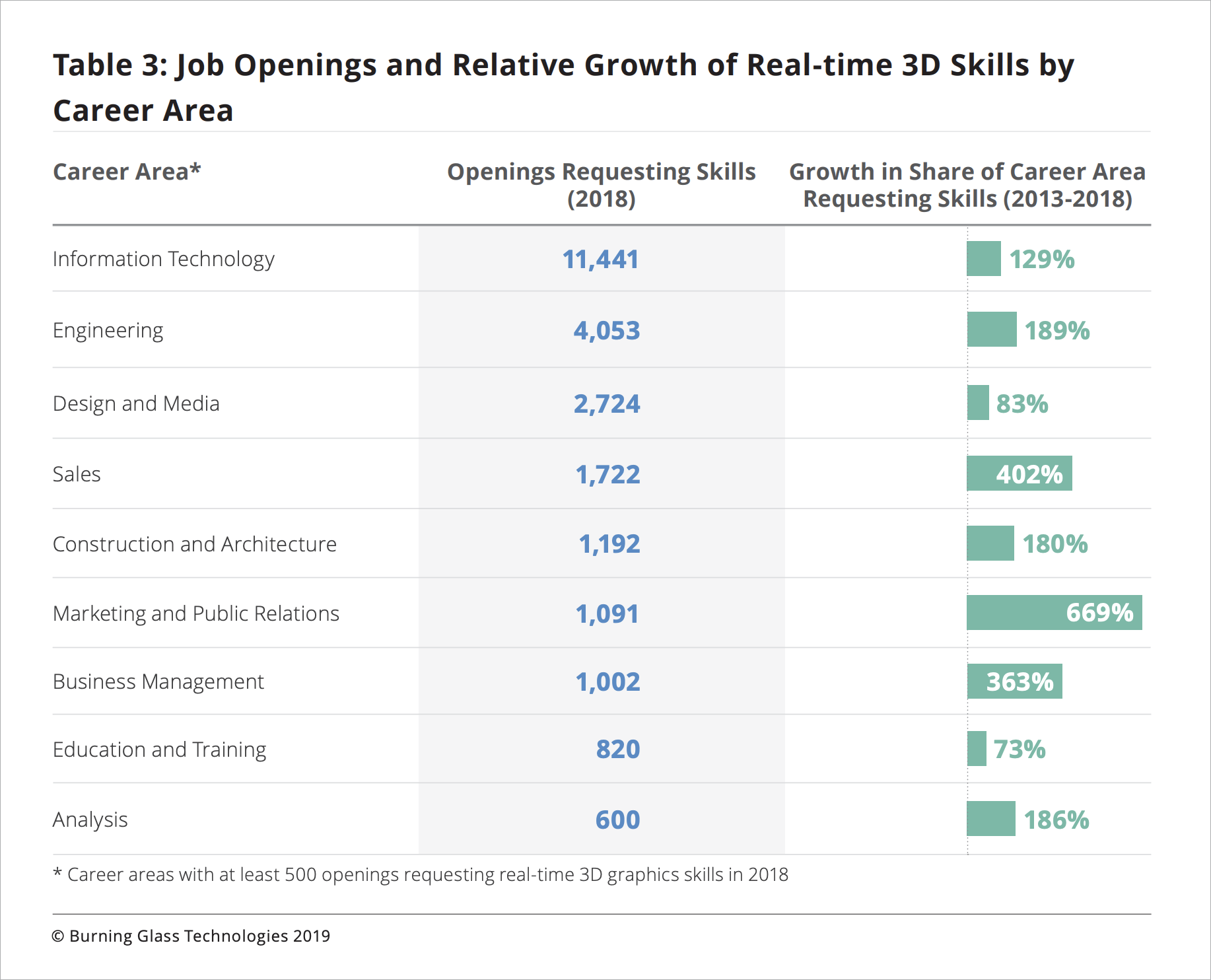
Source: Visualizing the Future Report, Burning Glass Technologies, 2019
In a competitive product promotion environment, speed and quality are becoming a major advantage. Real-time 3D technology is ideal for large companies that host events in several countries at the same time.
In branding and graphic design, game engines help visualize design options for later discussion. For example, you can take a walk around the virtual office to choose the best place for cybersecurity professionals. My personal prototype project for Cyber Protection Operations Center made in Unity:
Trend # 3: PBR - A New Industry Standard
Physically Based Rendering (PBR ) is a modern approach to creating and rendering realistic 3D assets. Adobe recently began working with Allegorithmic, a 3D texturing software company . Adobe's Substance programs have a set of tools that help professionals create PBR textures and edit them on the fly.
Substance is widely used in the field of video games, film and animation, design and architecture.
DreamWorks Animation switched to physically correct rendering in the animated film How to Train Your Dragon 3, which was helped by Substance Painter. In the series “Happy Trinashka” of the series “Love, Death and Robots”, Sony Pictures Imageworks achieved a photorealistic texture thanks to the Substance Designer program . Both tools were used to create the Netflix animation film "Next Generation" already mentioned.
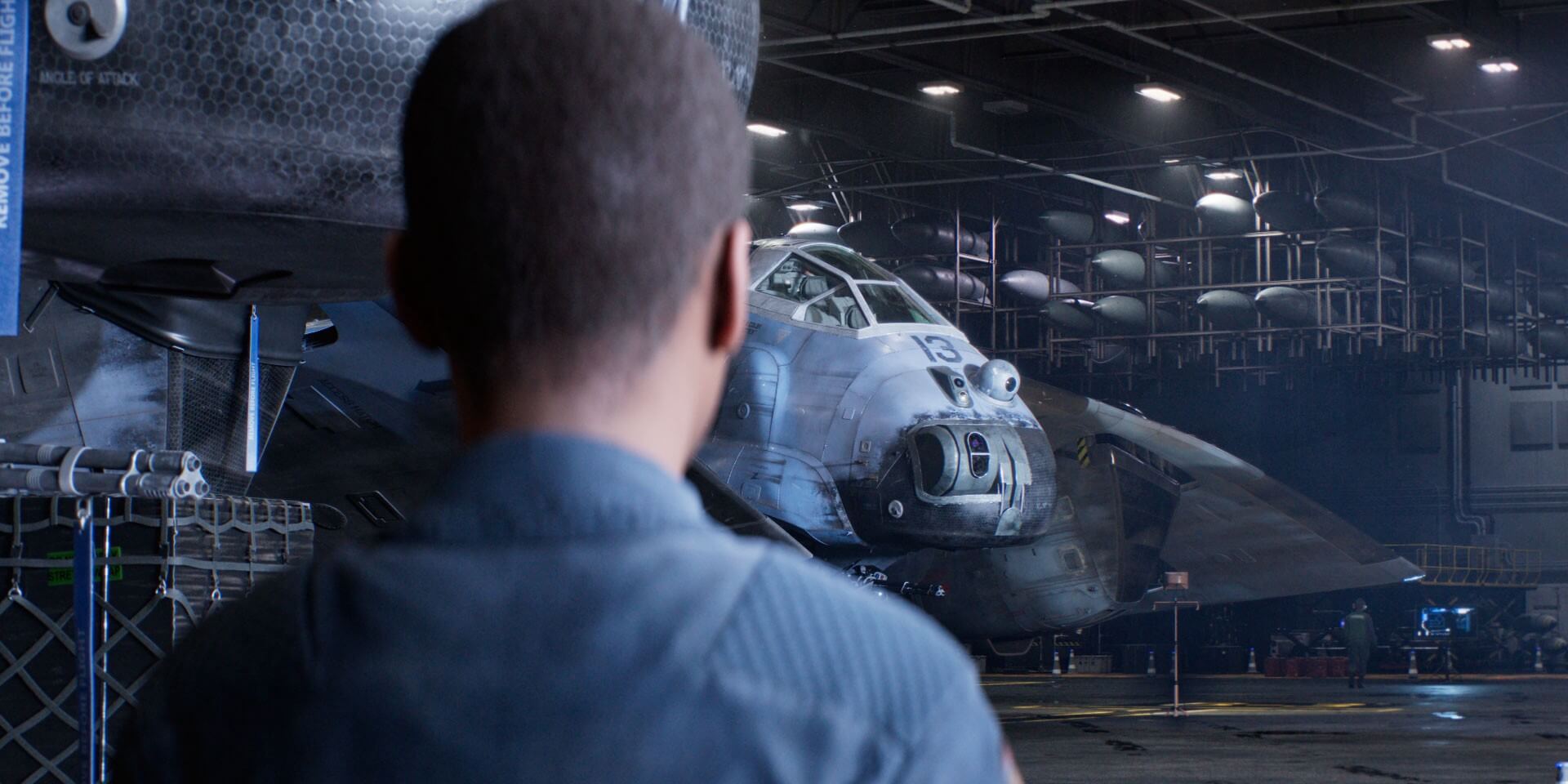
Screenshot from the Lucky 13 series, Sony Pictures Imageworks, 2019
With PBR, artists create material by determining its real physical properties : is it a dielectric or a conductor, how smooth is its surface, how much light does it reflect or emit, what color waves does it absorb. For complex materials, such as rusted metal, you can set different properties separately for rusty and painted areas. To learn how PBR works, see the Allegorithmic manual:
In graphic design, PBR texturing helps to brand objects that exist both on the screen and in reality. An example - these souvenir balls, created in conjunction with the football clubs Arsenal and Manchester City:
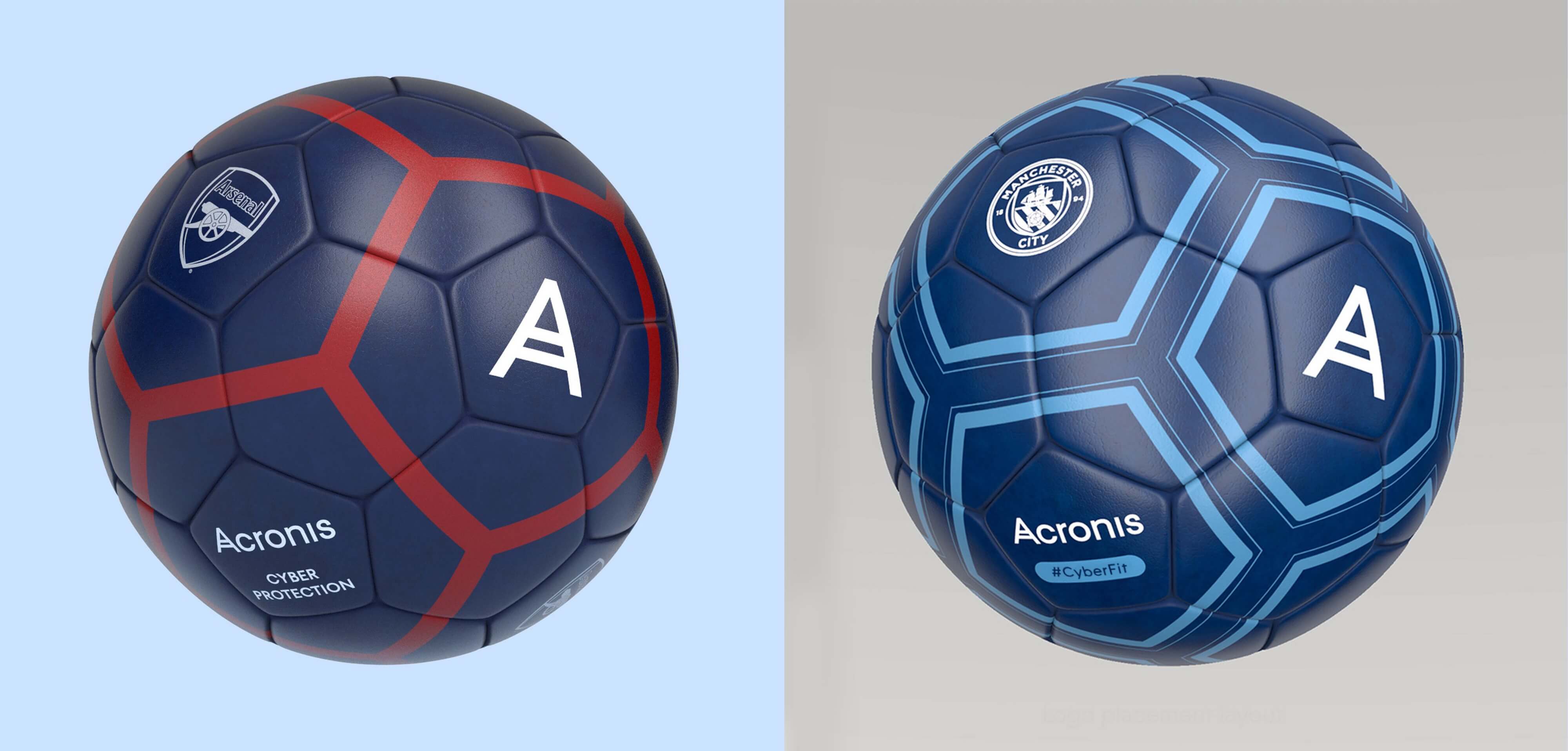

3D renderings and real objects
For the texture, the base material of the skin is used, to which scuffs and other small details are added in the process. And most importantly, you can change the color of the object at any time to create other variations.
The presence of a digital object in 3D simplifies the designer’s life when you need to produce a real object. Printed templates are somewhat reminiscent of the expanded geometry of a 3D model (UV). And when the design is already available from all angles in 3D, it’s easier to transfer it to the desired areas for printing.


Three stages of the development of a soccer ball: 1) an empty template for printing; 2) the final layout for printing; 3) 3D model with UV scans and textures
conclusions
3D technology is everywhere and one day it will come for you. Do not be afraid, working with them is no more difficult than mastering Photoshop.
In addition to professional software, there are many fun and simple 3D-programs with which designers can play. Here, for example, are voxel avatars made by intern trainees from Acronis Singapore in the Magica Voxel editor.

Avatars created in MagicaVoxel rendered in Blender 2.8
Let's look into the future before it comes!
By the way
We have an Acronis Design blog in English on Medium. This means that all new articles first appear on our blog and only then, after some time, are translated into Russian. Feel free to follow us! Will be interesting!
useful links
- "Visualizing the Future" skills report
- Blender 2.8. Beginner's tutorial series
- Popular game engines: Unity , Unreal Engine , and CryEngine
- PBR guide by Allegorithmic: Part 1 , Part 2
- Magica voxel
- Subscribe to Acronis Design on Facebook
- Acronis Design blog on Medium